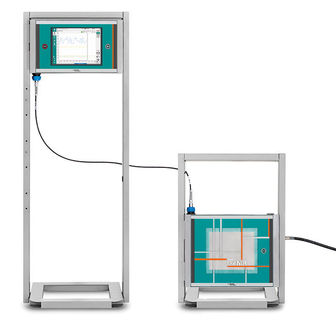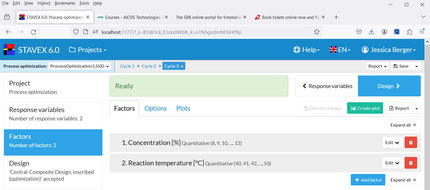|
|
| Cytochrome P450 Oxidase (CYP2C9)
|
|
|
| Identifiers
|
| Symbol
| p450
|
| Pfam
| PF00067
|
| InterPro
| IPR001128
|
| SCOP
| 2cpp
|
| OPM family
| 41
|
| OPM protein
| 1w0f
|
| Available PDB structures:
1u13A:185-445 1h5zA:185-445 1x8vA:185-445
1ea1A:185-445 1e9xA:185-445 1n97A:256-382
1fahB:7-449 1yqoB:7-449 2bmhA:7-449
1bvyB:7-449 1jpzA:7-449 1smjA:7-449
1p0xA:7-449 1fagA:7-449 1p0vB:7-449
1smiA:7-449 2hpdA:7-449 1bu7B:7-449
1p0wA:7-449 1yqpB:7-449 1jmeB:7-449
1w0fA:38-493 1w0eA:38-493 1w0gA:38-493
1tqnA:38-493 1egyA:5-402 1z8oA:5-402
1jinA:5-402 1eupA:5-402 1z8pA:5-402
1z8qA:5-402 1jipA:5-402 1oxa :5-402
1jioA:5-402 1ue8A:242-364 1io8B:242-364
1f4tB:242-364 1io7A:242-364 1io9B:242-364
1f4uB:242-364 1se6B:277-371 2d0eA:277-371
2d09A:277-371 1t93A:277-371 1cpt :318-425
1pkfA:223-386 1q5dA:223-386 1q5eA:223-386
1n4gA:279-365 1n40A:279-365 1odoA:1-405
1gwiB:277-372 1uedA:12-404 1lfkA:6-395
1lg9A:6-395 1lgfA:6-395 6cpp :14-400
1iwkA:14-400 1yrdA:14-400 1t88A:14-400
1uyuB:14-400 1dz4A:14-400 4cpp :14-400
1akd :14-400 1o76A:14-400 1dz8B:14-400
1noo :14-400 4cp4 :14-400 1j51B:14-400
1k2oA:14-400 2a1nB:14-400 1lwlA:14-400
1mpwB:14-400 1cp4 :14-400 1t85A:14-400
1phc :14-400 3cp4 :14-400 1t87A:14-400
2cpp :14-400 1yrcA:14-400 1dz9A:14-400
1pha :14-400 1t86B:14-400 2a1oB:14-400
6cp4 :14-400 3cpp :14-400 8cpp :14-400
7cpp :14-400 1phe :14-400 1dz6B:14-400
1phg :14-400 1qmqA:14-400 1phb :14-400
1c8jB:14-400 2cp4 :14-400 1gemA:14-400
1phd :14-400 5cpp :14-400 1re9A:14-400
1iwjA:14-400 2a1mB:14-400 1gekA:14-400
1iwiA:14-400 1gebA:14-400 1rf9A:14-400
1p7rA:14-400 1phf :14-400 5cp4 :14-400
1p2yA:14-400 1gjmA:14-400 1t2bA:20-398
1izoB:277-339 2bdmA:31-488 1suoA:31-488
1po5A:31-488 1z10B:34-491 1z11D:34-491
1n6bA:30-484 1nr6A:30-484 1dt6A:30-484
1og2A:30-487 1og5A:30-487 1r9oA:30-487
1pq2A:30-487 2f9qC:34-494 2c17A:48-493
1jo9A:48-493 1scc :52-510 1mfxA:61-526
1geiA:6-400 1cmnA:6-400 1xqdA:6-400
1gedA:6-400 1jfcA:6-400 1rom :6-400
1cl6A:6-400 1gejA:6-400 1cmjA:6-400
1ehfA:6-400 1f25A:6-400 1f24A:6-400
2rom :6-400 1ulwA:6-400 1jfbA:6-400
1f26A:6-400 1ehgA:6-400 1eheA:6-400
1tqaA:52-488
|
Cytochrome P450 (abbreviated CYP, P450, infrequently CYP450) is a very large and diverse superfamily of hemoproteins found in bacteria, archaea and eukaryotes.[1] Cytochromes P450 use a plethora of both exogenous and endogenous compounds as substrates in enzymatic reactions. Usually they form part of multicomponent electron transfer chains, called P450-containing systems.
The most common reaction catalysed by cytochrome P450 is a monooxygenase reaction, i.e. insertion of one atom of oxygen into an organic substrate (RH) while the other oxygen atom is reduced to water:
RH + O2 + 2H+ + 2e– → ROH + H2O
CYP enzymes have been identified from all lineages of life, including mammals, birds, fish, insects, worms, sea squirts, sea urchins, plants, fungi, slime molds, bacteria and archaea. More than 7700 distinct CYP sequences are known (as of September 2007; see the web site of the P450 Nomenclature Committee for current counts).[2]
The name cytochrome P450 is derived from the fact that these are colored ('chrome') cellular ('cyto') proteins, with a "pigment at 450 nm", so named for the characteristic Soret peak formed by absorbance of light at wavelengths near 450 nm when the heme iron is reduced (often with sodium dithionite) and complexed to carbon monoxide.
While prokaryotic P450s are water-soluble proteins, most eukaryotic P450s are associated with microsomal membranes. Their general enzymatic function is to
catalyse oxidation of non-activated hydrocarbons at physiological temperatures.
Nomenclature
Genes encoding CYP enzymes, and the enzymes themselves, are designated with the abbreviation "CYP", followed by an Arabic numeral indicating the gene family, a capital letter indicating the subfamily, and another numeral for the individual gene. The convention is to italicise the name when referring to the gene. For example, CYP2E1 is the gene that encodes the enzyme CYP2E1 – one of the enzymes involved in paracetamol (acetaminophen) metabolism. The "CYP" nomenclature is the officially preferred naming convention. However, some gene or enzyme names for CYPs may differ from this nomenclature, denoting the catalytic activity and the name of the compound used as substrate. Examples include CYP5, thromboxane A2 synthase, abbreviated to TXAS (ThromboXane A2 Synthase), and CYP51, lanosterol 14-α-demethylase, abbreviated to LDM according to its substrate (Lanosterol) and activity (DeMethylation). [3]
The current nomenclature guidelines suggest that members of new CYP families share >40% amino acid identity, while members of subfamiles must share >55% amino acid identity. There is a Nomenclature Committee that keeps track of and assigns new names.
Mechanism
-
The active site of cytochrome P450 contains a heme iron center. The iron is tethered to the P450 protein via a thiolate ligand derived from a cysteine residue. This cysteine and several flanking residues (RXCXG) are highly conserved in known CYPs[2]. Because of the vast variety of reactions catalyzed by CYPs, the activities and properties of the many CYPs differ in many aspects. A general description of the P450 enzyme properties can be summarized as follows:
- 1. The resting state of the protein is as oxidized Fe3+.
- 2. Binding of a substrate initiates electron transport and oxygen binding.
- 3. Electrons are supplied to the CYP by another protein, either cytochrome P450 reductase, ferredoxins, or cytochrome b5 to reduce the heme iron.
- 4. Molecular oxygen is bound and split by the reduced heme iron.
- 5. An iron-bound oxidant, in some cases an iron(IV) oxo[citation needed], oxidizes the substrate to an alcohol or an epoxide, regenerating the resting state of the CYP.
Because most CYPs require a protein partner to deliver one or more electrons to reduce the iron (and eventually molecular oxygen), CYPs are properly speaking part of P450-containing systems of proteins. Five general schemes are known:
- CPR/cyb5/P450 systems employed by most eukaryotic microsomal (i.e., not mitochondrial) CYPs involve the reduction of cytochrome P450 reductase (variously CPR,POR, or CYPOR) by NADPH, and the transfer of reducing power as electrons to the CYP. Cytochrome b5 (cyb5) can also contribute reducing power to this system after being reduced by cytochrome b5 reductase (CYB5R).
- FR/Fd/P450 systems which are employed by mitochondrial and some bacterial CYPs.
- CYB5R/cyb5/P450 systems in which both electrons required by the CYP come from cytochrome b5.
- FMN/Fd/P450 systems originally found in Rhodococcus sp. in which a FMN-domain-containing reductase is fused to the CYP.
- P450 only systems, which do not require external reducing power. Notably these include CYP5 (thromboxane synthase), CYP8, prostacyclin synthase, and CYP74A (allene oxide synthase).
P450s in humans
Human CYPs are primarily membrane-associated proteins, located either in the inner membrane of mitochondria or in the endoplasmic reticulum of cells. CYPs metabolise thousands of endogenous and exogenous compounds. Most CYPs can metabolize multiple substrates, and many can catalyze multiple reactions, which accounts for their central importance in metabolizing the extremely large number of endogenous and exogenous molecules. In the liver, these substrates include drugs and toxic compounds as well as metabolic products such as bilirubin (a breakdown product of hemoglobin). Cytochrome P450 enzymes are present in many other tissues of the body including the mucosa of the gastrointestinal tract, and play important roles in hormone synthesis and breakdown (including estrogen and testosterone synthesis and metabolism), cholesterol synthesis, and vitamin D metabolism. Hepatic cytochromes P450 are the most widely studied of the P450 enzymes.
The Human Genome Project has identified more than 63 human genes (57 full genes and 5 pseudogenes) coding for the various cytochrome P450 enzymes.[4]
Drug metabolism
In drug metabolism, cytochrome P450 is probably the most important element of oxidative metabolism (a part of phase I metabolism) in humans (metabolism in this context being the chemical modification or degradation of chemicals including drugs and endogenous compounds).
Drug interaction
Many drugs may increase or decrease the activity of various CYP isozymes in a phenomenon known as enzyme induction and inhibition. This is a major source of adverse drug interactions, since changes in CYP enzyme activity may affect the metabolism and clearance of various drugs. For example, if one drug inhibits the CYP-mediated metabolism of another drug, the second drug may accumulate within the body to toxic levels, possibly causing an overdose. Hence, these drug interactions may necessitate dosage adjustments or choosing drugs which do not interact with the CYP system. Such drug interaction are extra important to take in account when using drugs of vital importance to the patient, drugs with important side effects and drugs with small therapeutic windows, but any drug may be subject to an altered plasma concentration due to altered drug metabolism.
A classical example includes anti-epileptic drugs. Phenytoin, for example, induces CYP1A2, CYP2C9, CYP2C19 and CYP3A4. Substrates for the latter may be drugs with critical dosage, like amiodarone or carbamazepine, whose blood plasma concentration may decrease because of enzyme induction.
Interaction of other substances
In addition, naturally occurring compounds may cause a similar effect. For example, bioactive compounds found in grapefruit juice and some other fruit juices, including bergamottin, dihydroxybergamottin, and paradisin-A, have been found to inhibit CYP3A4-mediated metabolism of certain medications, leading to increased bioavailability and thus the strong possibility of overdosing.[5] Because of this risk, avoiding grapefruit juice and fresh grapefruits entirely while on drugs is usually advised.
Other examples are:
Saint-John's wort, a common herbal remedy, which the opposite effect as grapefruit juice, inducing CYP3A4.
Tobacco smoking induces CYP1A2 (example substrates are clozapine/olanzapine)
Other specific CYP functions
A subset of cytochrome P450 enzymes play important roles in the synthesis of steroid hormones (steroidogenesis) by the adrenals, gonads, and peripheral tissue:
- CYP11A1 (also known as P450scc or P450c11a1) in adrenal mitochondria effects “the activity formerly known as 20,22-desmolase” (steroid 20α-hydroxylase, steroid 22-hydroxylase, cholesterol side chain scission).
- CYP11B1 (encoding the protein P450c11β) found in the inner mitochondrial membrane of adrenal cortex has steroid 11β-hydroxylase, steroid 18-hydroxylase, and steroid 18-methyloxidase activities.
- CYP11B2 (encoding the protein P450c11AS), found only in the mitochondria of the adrenal zona glomerulosa, has steroid 11β-hydroxylase, steroid 18-hydroxylase, and steroid 18-methyloxidase activities.
- CYP17A1, in endoplasmic reticulum of adrenal cortex has steroid 17α-hydroxylase and 17,20-lyase activities.
- CYP21A1 (P450c21) in adrenal cortex conducts 21-hydroxylase activity.
- CYP19A (P450arom, aromatase) in endoplasmic reticulum of gonads, brain, adipose tissue, and elsewhere catalyzes aromatization of androgens to estrogens.
CYP Families
Humans have 57 genes and more than 59 pseudogenes divided among 18 families of cytochrome P450 genes and 43 subfamilies.[6] This is a summary of the genes and of the proteins they encode. See the homepage of the Cytochrome P450 Nomenclature Committee for detailed information.[4]
| Family | Function | Members | Names
|
| CYP1 | drug and steroid (especially estrogen) metabolism | 3 subfamilies, 3 genes, 1 pseudogene | CYP1A1, CYP1A2, CYP1B1
|
| CYP2 | drug and steroid metabolism | 13 subfamilies, 16 genes, 16 pseudogenes | CYP2A6, CYP2A7, CYP2A13, CYP2B6, CYP2C8, CYP2C9, CYP2C18, CYP2C19, CYP2D6, CYP2E1, CYP2F1, CYP2J2, CYP2R1, CYP2S1, CYP2U1, CYP2W1
|
| CYP3 | drug and steroid (including testosterone) metabolism | 1 subfamily, 4 genes, 2 pseudogenes | CYP3A4, CYP3A5, CYP3A7, CYP3A43
|
| CYP4 | arachidonic acid or fatty acid metabolism | 6 subfamilies, 11 genes, 10 pseudogenes | CYP4A11, CYP4A22, CYP4B1, CYP4F2, CYP4F3, CYP4F8, CYP4F11, CYP4F12, CYP4F22, CYP4V2, CYP4X1, CYP4Z1
|
| CYP5 | thromboxane A2 synthase | 1 subfamily, 1 gene | CYP5A1
|
| CYP7 | bile acid biosynthesis 7-alpha hydroxylase of steroid nucleus | 2 subfamilies, 2 genes | CYP7A1, CYP7B1
|
| CYP8 | varied | 2 subfamilies, 2 genes | CYP8A1 (prostacyclin synthase), CYP8B1 (bile acid biosynthesis)
|
| CYP11 | steroid biosynthesis | 2 subfamilies, 3 genes | CYP11A1, CYP11B1, CYP11B2
|
| CYP17 | steroid biosynthesis, 17-alpha hydroxylase | 1 subfamily, 1 gene | CYP17A1
|
| CYP19 | steroid biosynthesis: aromatase synthesizes estrogen | 1 subfamily, 1 gene | CYP19A1
|
| CYP20 | unknown function | 1 subfamily, 1 gene | CYP20A1
|
| CYP21 | steroid biosynthesis | 2 subfamilies, 2 genes, 1 pseudogene | CYP21A2
|
| CYP24 | vitamin D degradation | 1 subfamily, 1 gene | CYP24A1
|
| CYP26 | retinoic acid hydroxylase | 3 subfamilies, 3 genes | CYP26A1, CYP26B1, CYP26C1
|
| CYP27 | varied | 3 subfamilies, 3 genes | CYP27A1 (bile acid biosynthesis), CYP27B1 (vitamin D3 1-alpha hydroxylase, activates vitamin D3), CYP27C1 (unknown function)
|
| CYP39 | 7-alpha hydroxylation of 24-hydroxycholesterol | 1 subfamily, 1 gene | CYP39A1
|
| CYP46 | cholesterol 24-hydroxylase | 1 subfamily, 1 gene | CYP46A1
|
| CYP51 | cholesterol biosynthesis | 1 subfamily, 1 gene, 3 pseudogenes | CYP51A1 (lanosterol 14-alpha demethylase)
|
P450s in animals
In most animals, just as in humans, hepatic cytochromes P450 are the most widely studied of the P450 enzymes.
However, there are several differences in expression and regulation of CYP enzymes between species. For instance, cynomolgus monkeys have lower risk of evolving cancer from eating cooked meat, because they don't have the same expression of CYP1A2, which converts certain dietary heterocyclic amines in such meat to genotoxic products[7].
P450s in bacteria
Bacterial cytochromes P450 are often soluble enzymes and are involved in critical metabolic processes. Three examples that have contributed significantly to structural and mechanistic studies are listed here, but many different families exist.
- Cytochrome P450cam (CYP101) originally from Pseudomonas putida has been used as a model for many cytochrome P450s and was the first cytochrome P450 three-dimensional protein structure solved by x-ray crystallography. This enzyme is part of a camphor-hydroxylating catalytic cycle comprised of two electron transfer steps from putidaredoxin, a 2Fe-2S cluster-containing protein cofactor.
- Cytochrome P450 eryF (CYP107A1) originally from the actinomycete bacterium Saccharopolyspora erythraea is responsible for the biosynthesis of the antibiotic erythromycin by C6-hydroxylation of the macrolide 6-deoxyerythronolide B.
- Cytochrome P450 BM3 (CYP102A1) from the soil bacterium Bacillus megaterium catalyzes the NADPH-dependent hydroxylation of several long-chain fatty acids at the ω–1 through ω–3 positions. Unlike almost every other known CYP (except CYP505A1, cytochrome P450 foxy), it constitutes a natural fusion protein between the CYP domain and an electron donating cofactor. Thus, BM3 is potentially very useful in biotechnological applications.[8][9]
P450s in fungi
The commonly used azole antifungal agents work by inhibition of the fungal cytochrome P450 14α-demethylase. This interrupts the conversion of lanosterol to ergosterol, a component of the fungal cell membrane.
P450s in plants
Plant cytochrome P450s are involved in a wide range of biosynthetic reactions, leading to various fatty acid conjugates, plant hormones, defensive compounds, or medically important drugs. Terpenoids, which represent the largest class of characterized natural plant compounds, are often substrates for plant CYPs.
InterPro subfamilies
- Cytochrome P450, B-class IPR002397
- Cytochrome P450, mitochondrial IPR002399
- Cytochrome P450, E-class, group I IPR002401
- Cytochrome P450, E-class, group II IPR002402
- Cytochrome P450, E-class, group IV IPR002403
References
- ^ International Union of Pure and Applied Chemistry. "cytochrome P450". Compendium of Chemical Terminology Internet edition. Danielson P (2002). "The cytochrome P450 superfamily: biochemistry, evolution and drug metabolism in humans". Curr Drug Metab 3 (6): 561-97. PMID 12369887.
- ^ a b Dr. Nelson Lab Website. Retrieved on 2007-11-19.
- ^ NCBI sequence viewer. Retrieved on 2007-11-19.
- ^ a b "P450 Table".
- ^ Bailey DG, Dresser GK (2004). "Interactions between grapefruit juice and cardiovascular drugs". Am J Cardiovasc Drug 4 (5): 281-297. PMID 15449971.
- ^ Nelson D (2003). Cytochrome P450s in humans. Retrieved May 9, 2005.
- ^ Rang, Dale, Ritter & Moore (2003). Pharmacology, 5th, Churchill Livingstone. ISBN 0443071454.
- ^ Narhi L, Fulco A (1986). "Characterization of a catalytically self-sufficient 119,000-dalton cytochrome P-450 monooxygenase induced by barbiturates in Bacillus megaterium". J Biol Chem 261 (16): 7160-9. PMID 3086309.
- ^ Girvan H, Waltham T, Neeli R, Collins H, McLean K, Scrutton N, Leys D, Munro A (2006). "Flavocytochrome P450 BM3 and the origin of CYP102 fusion species". Biochem Soc Trans 34 (Pt 6): 1173-7. PMID 17073779.
| Cytochromes, oxygenases: cytochrome P450 (EC 1.14) |
|---|
| CYP1 | A1, A2, B1 |
|---|
| CYP2 | A6, A7, A13, B6, C8, C9, C18, C19, D6, E1, F1, J2, R1, S1, U1, W1 |
|---|
| CYP3 | A4, A5, A7, A43 |
|---|
| CYP4 | A11, A22, B1, F2, F3, F8, F11, F12, F22, V2, X1, Z1 |
|---|
| CYP5-20 | CYP5 (A1) - CYP7 (A1, B1) - CYP8 (A1, B1) - CYP11 (A1, B1, B2) - CYP17 (A1) - CYP19 (A1) - CYP20 (A1) |
|---|
| CYP21-51 | CYP21 (A2) - CYP24 (A1) - CYP26 (A1, B1, C1) - CYP27 (A1, B1, C1) - CYP39 (A1) - CYP46 (A1) - CYP51 (A1) |
|---|
|







